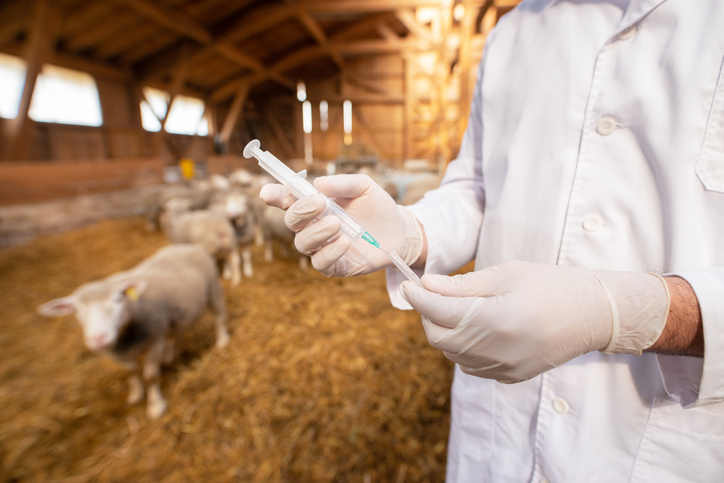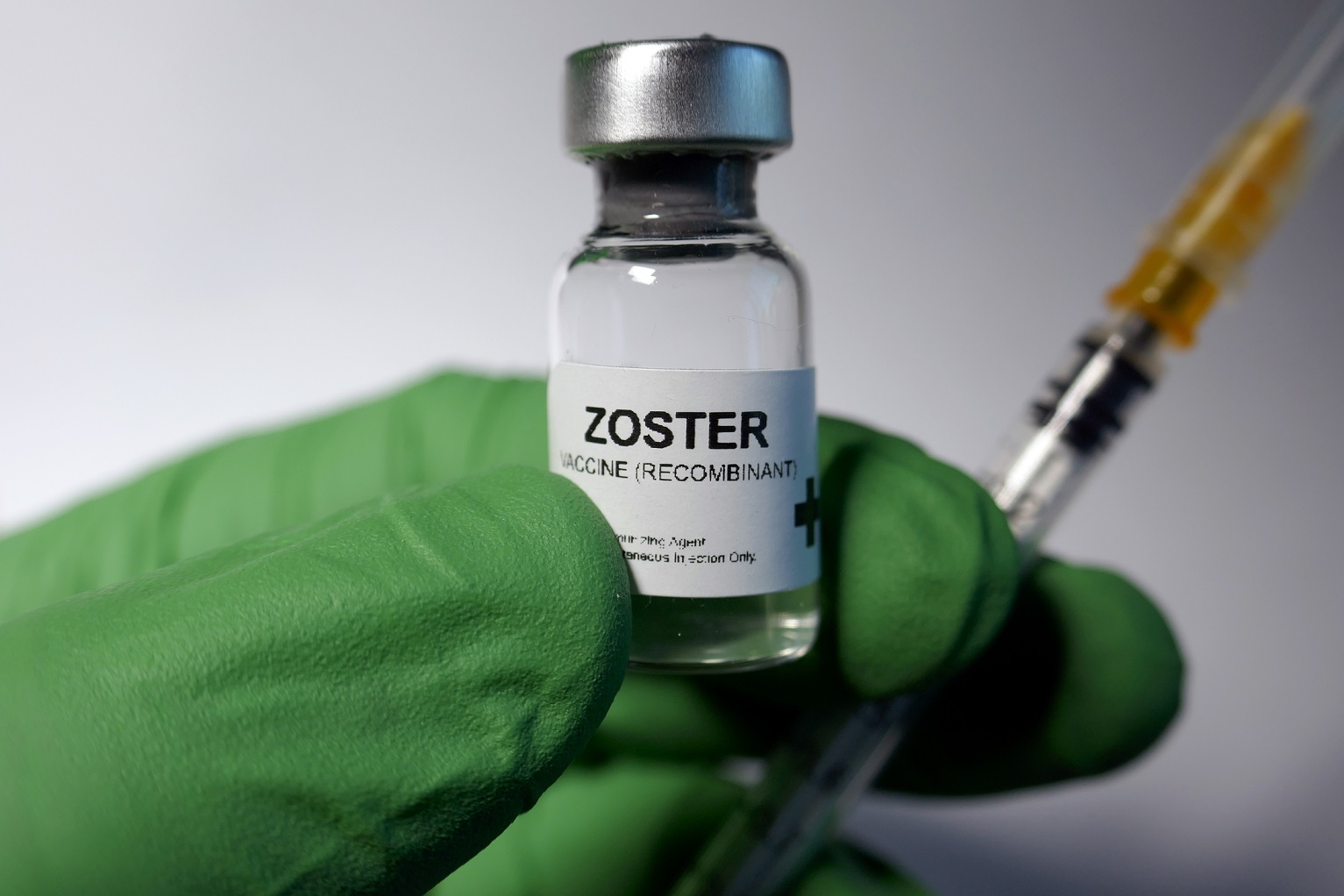New research raises serious questions about the COVID-19 vaccine’s long-term effectiveness and potential role in increasing susceptibility to infection.
In a recent peer-reviewed study published in Clinical Infectious Diseases, researchers found that the risk of COVID-19 increased as the number of vaccine doses increased and the vaccine became increasingly less effective against variants different from those it was designed to target.
The study evaluated 48,210 employees at Cleveland Clinic with diverse vaccination and infection histories to determine whether the 2023-2024 formulation of the “messenger” RNA (mRNA) COVID-19 vaccine protected against COVID-19.
(Note: Although the Centers for Disease Control and Prevention (CDC) on a recently removed webpage says that mRNA COVID-19 vaccines are “made of mRNA,” or “messenger RNA,” the U.S. Food and Drug Administration’s (FDA) product label shows COVID-19 vaccines contain artificially modified RNA—a key ingredient that is not naturally occurring and poses a substantial risk to human health. Pfizer, on its own website, confirms its COVID-19 vaccine contains modRNA.)
The 2023-2024 vaccine was designed to target the XBB lineages of the Omicron variant, but by the time it was made available to the public, most people in the U.S. were being infected by post-XBB strains.
Of the 48,210 employees who participated in the study, 7,978 (or 17 percent) received the 2023-2024 COVID-19 vaccine formulation, and 89 percent of doses administered were Pfizer/BioNTech.
The study showed the COVID-19 vaccine was only 42 percent effective before JN.1 became the dominant variant and only 19 percent effective after. Participants recently infected by the XBB variant or other recent variants had the lowest risk of COVID-19, as did those who received fewer vaccine doses.
According to the authors of the study, the original antigenic sin hypothesis or immune imprinting could explain why people who received more vaccine doses had an increased risk of infection.
This hypothesis suggests that the immune system, when first exposed to a virus, develops a memory response based on that initial exposure to the antigens in the prior vaccine. If the virus later mutates, the immune system tends to rely on its “memory” of the original virus, potentially leading to a less effective immune response to the new variant.
This concept has been observed in influenza and is being explored in the context of SARS-CoV-2, where previous exposure or vaccination might influence the effectiveness of responses to new variants. In the meantime, U.S. health agencies continue to roll out “updated” formulations of COVID-19 vaccines with little regard.
The researchers said people with immunocompromised conditions could explain why vaccines wouldn’t appear effective; however, that would not explain the results of this study as the mean age of participants was 42 years, there were no children included, and there were few elderly participants.
Although COVID-19 vaccines are said to work by preventing severe disease, the number of severe illnesses was so small among all participants—vaccinated or not—that researchers couldn’t examine the severity of the disease as an outcome.
Recently Approved COVID-19 Vaccines are Already Outdated
The study suggests that the reduced vaccine effectiveness could be due to natural immunity conferred from previous SARS-CoV-2 infection or because the COVID-19 vaccine was no longer matched to the circulating strains by the time it was approved.
The FDA on Aug. 22 approved and authorized for emergency use new formulations of the Pfizer/BioNTech and Moderna COVID-19 vaccines for the 2024-2025 season. These vaccines are specifically designed to target the KP.2 strain of the SARS-CoV-2 virus. The KP.2 strain is part of the Omicron variant family and is closely related to the JN.1 lineage.
Yet, as was the case with the previously approved 2023-2024 COVID-19 vaccine analyzed by researchers, vaccines targeting the KP.2 variant are already outdated, which could render the most recent version of the vaccine minimally effective.
According to CDC data from Aug. 19, the most prevalent variant is KP.3.1.1, which surpassed KP.3 in dominance after it overtook KP.2 back in June. KP3.1.1 is currently the only major variant increasing in proportion nationally.
So, people are now lining up for their sixth or seventh dose of a vaccine developed for a variant that’s already been replaced by subsequent variants, and U.S. health agencies are ignoring the vast amount of research that shows that not only is the shot likely to be minimally effective, but may increase the risk of infection.
Risk of Developing COVID-19 Increases With Vaccination
A growing body of evidence, including the study in Clinical Infectious Diseases, suggests COVID-19 vaccination actually increases an individual’s risk of acquiring COVID-19.
Another study published online in April 2022 in Clinical Infectious Diseases evaluated 39,766 Cleveland Clinic employees and found no advantage to administering more than one vaccine dose to people who previously had COVID-19. Additionally, those who received two doses of a COVID-19 vaccine were at a higher risk of infection than those who only received one dose.
In a 2023 paper published in Open Forum Infectious Diseases, researchers evaluated the bivalent COVID-19 vaccine among 51,017 participants. They found the bivalent vaccine was only 29 percent effective against the BA 4/5 strains it was developed to target, 20 percent effective against the subsequent BQ lineages, and only 4 percent effective against the XBB lineage. Data show that the risk of COVID-19 increased with the number of vaccine doses previously received.
A 2023 study in PLoS One compared the risk of COVID-19 among those “up-to-date” and “not up-to-date” on COVID-19 vaccination using CDC criteria. At the time, the CDC defined being “up-to-date” on vaccination as having received at least one dose of a COVID-19 bivalent vaccine.
The study found that adults considered “up-to-date” on COVID-19 vaccination when the XBB lineages became dominant did not have a reduced risk of infection than those who were not “up-to-date” on vaccination.
According to CDC data published in December 2022, vaccine efficacy appeared lower in persons aged 50 and over who received three or four monovalent vaccine doses before receiving their bivalent booster than those who only received two doses before receiving a bivalent booster.
In a 2022 population-based cohort study published in JAMA Network, researchers aimed to estimate the proportion of persons reinfected with SARS-CoV-2 during the Omicron wave in Iceland. To their surprise, two or more vaccine doses were associated with a “slightly higher probability of reinfection compared with one dose or less.”
Finally, a preprint study published in March 2023 on medRxiv compared SARS-CoV-2 infection rates among individuals in Qatar who initially had Omicron infection but different vaccination histories. Although the data suggest two doses of a COVID-19 vaccine reduced the risk of reinfection, receiving a booster dose was associated with a higher risk of reinfection than two doses alone.
One thing is clear: Research suggests the government’s COVID-19 whack-a-mole strategy that involves repeatedly vaccinating Americans with endless outdated boosters designed to target ever-evolving variants that evade “vaccine protection” could actually be driving SARS-CoV-2 infections—in addition to subjecting people, including children, to a host of potential risks. The only entities that benefit from this type of vaccine strategy are the pharmaceutical companies.
If you would like to receive an e-mail notice of the most recent articles published in The Vaccine Reaction each week, click here.
This article was originally published on Substack. Megan Redshaw is an attorney and journalist with additional expertise in natural health. She has a flare for breaking down complex and controversial topics into easy-to-synthesize and entertaining pieces that empower others to make informed.













12 Responses
You can trust anything Megan Redshaw writes. She doesn’t know science and she has misinterpreted scientific methods and data in past writings. Furthermore, she has refused to correct her errors after they were pointed out to her. Please independently verify anything she writes before you repeat it to anyone else (a lesson I had to learn the hard way).
An interesting note. Can you provide any information regarding any misrepresentations in this article?
False.
Not false. You still have not corrected errors in your articles at Children’s Health Defense. Even after I pointed out one of your errors directly to you and Brian Hooker (Chief Scientific Officer at CHD), you still have not corrected that error, which was repeated all over the internet. When I pointed out this error to media outlets that had repeated your error, they investigated my claim and quickly corrected their mistake. They had trusted your reporting and got burned.
And the errors in your articles would only be made by a person who did not understand the science. Please enlighten us as to the scientific education or training that qualifies you to write about scientific issues.
I notice Budapest never says what the error is. Is he trolling?
Frank P,
There were multiple errors in her articles. Would it make any difference to the readers here if I detailed the errors. My experience on the many other comment forums where Ms. Redshaw’s error was repeated is no, it would not. My experience is that if a writer makes an error that aligns with the bias of the readers, then the readers want to believe it and will dismiss the person pointing out the error as a troll. I posted indisputable evidence of the error at Children’s Health Defense. With very few exceptions, the readers dismissed me as a troll and spewed ad hominem insults at me – the predictable reply of people who cannot refute the truth. But even worse, CHD then censored my comments. Yes RFK, Jr’s organization censors people, despite his exhortations to the contrary. And I was a perennial donor to CHD. I spent MANY hours trying to get CHD to correct this error because it was being repeated by countless other internet channels whose point of view was aligned with CHD (and mine), because I feared it would undermine the credibility of CHD and others. What I found out was the truth doesn’t matter to these people, rather it is the message that matters – winning. That is why I stopped donating to CHD. For me the truth is paramount, besides there was no need to lie about the CDC, the truth (the science) was on our side. I will not adopt the ethics and morality of the CDC and FDA in order to win.
I have been sounding the alarm on vaccinations for more than two decades. I lost my job at a major university teaching hospital because of my refusal to accept a COVID vaccine and my outspoken opposition to vaccine mandates for adults, children, or anyone. I’ve had to change careers in my 60’s. I have paid a severe financial cost for my battle against required vaccines. I will not sit quietly when I see falsehoods reported by Ms. Redshaw or anyone else.
The error by Ms. Redshaw that I fought to get corrected was central to the work I did at the hospital. Her claim was preposterous, and simply reflected her ignorance of the science behind a bulletin issued by the CDC. I am proud to say that two other organizations to which I donated annually, NVIC and The Highwire, did not ever make this error in anything they published. Why, because they either had smarter writers or they did a thorough job of vetting their content before publishing it. I do not think CHD was vetting anything Ms. Redshaw published, and because her errors suited the agenda of CHD and the bias of its readers, no one bothered to check her writing, including me, until I began to see errors that were in my wheelhouse. Some media outlets did correct the error as soon as I brought it to their attention, but not all. Most media outlets simply want to publish content that appeals to their subscribers, followers, etc., for obvious reasons. Money matters more than truth to both sides of this struggle. Barbara Loe Fisher is an exception to this generalization. Her ethics are beyond reproach. She is my guiding model. From the beginning of her heroic battle on behalf of generations of children, up to the present, to my knowledge she has never gone beyond the truth, the verifiable evidence, in advocating her cause. In my opinion, NVIC is taking needless risk in publishing Ms. Redshaw’s writing. However, if they vet it properly, then I guess the risk is negligible.
I have spent so much time trying to correct the record on Ms. Redshaw that I don’t really care what you think Frank. I’ve learned the hard way that people either care about knowing the truth or they don’t. Those who care will find the truth with or without me, those who don’t are impervious to the truth, if it is not what they want to hear.
Peace to all.
The most egregious error she made was to claim “the CDC issued new guidance to laboratories recommending reducing the RT-PCR CT value to 28 cycles — but only for those fully vaccinated individuals being tested for COVID.” This is provably false.
Zooming out from OAS to general “nonspecific effects”, as described in an excellent presentation by Dr. Susan Humphries, there’s the observed pattern of inoculations shifting immunity away from innate and towards adaptive/humoral. Innate being the more complex, powerful, foundation of immunity. This TH1/TH2 shift was concluded as the driver of a massive increased risk in overall mortality in African based vaccine studies where areas with poor sanitation and other risk factors could overwhelm innate immunity due to this shift. I wonder if this phenomenon increases the overall risk of developing cancer given good innate immunity is important for immune system destruction of nascent cancer cells.
There are many studies sited, but no footnotes, which would allow me to read the studies written about. I’d like to share the article, but without the references, it is pointless.
Exactly why I scrolled down first to read this comment but no footnotes
There are no footnotes because it’s a substack post. Citations are hyperlinked. You click on the hyperlink, and you can read the studies just as easily as you would be able to if you clicked the hyperlink on a footnote.
W Budapest, you have my thanks for posting here. I have also followed the vaccine issue for many years as a lay person (and mother), subscribed to Dr. Robert Mendohlson’s newsletter and this one in the 1980s. I have also been dismayed at some of the articles and video presented on the Children’s Health Defense web site and you have pointed out the problem: People want to believe things untrue if they support their beliefs and are stubborn and willful when presented with factual information that doesn’t reinforce their bias.
I was not surprised to learn (from the very brave and honest Barbara Loe Fisher) that Dr. Mercola was not a person to trust or follow even if we can appreciate SOME of the articles he posts. She is the only one that has done this. I will definitely continue reading and appreciating the NVIC web site for trying to stick to the facts.